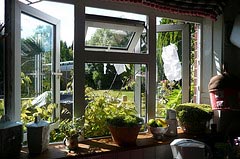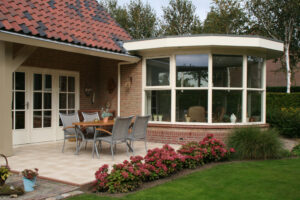Homeowners looking to go green don’t have to endure an extravagant makeover of their living space to make an impact. Tinting your windows is a great start to take your home from an energy guzzler to a lean machine.
Helping Your Family and the Earth
Also known as window film, window tint became popular decades ago as a design statement, but it quickly grew in demand for its protective and energy-saving features.
Window film reduces 99 percent of ultraviolet rays that can stream through windows and be harmful to families, iwfa.com reported. These rays have been linked to skin cancer and other health problems.
In addition, the power of UV rays in sunny climates is strong enough to rot the fabric from drapes and furniture and fade carpet and wood flooring. The addition of window tinting drastically reduces this kind of damage and saves money on replacement costs.
Tint also helps your energy bill and the earth. By eliminating the ability for UV rays to bore through windows, tinting helps homeowners decrease solar heat gain. This enables homes to rely less on air conditioning, minimizing harmful emissions. The improvement increases the overall energy savings of a home by 30 percent, according to 3M.com.
Added Benefits of Tinting
- Tinting reduces the sun’s harsh glare, making it easier to enjoy your computer, tablet and television
- It improves your privacy, as prying eyes can’t see in very well
- Tinting fortifies windows against strong storms and winds
- Tinted security film acts as an effective theft deterrent—the multiple micro-layers of film keep a pane intact, even if it’s shattered
Dollars and Sense
Window tinting consists of an adhesive layer, polyester substrate and a liner. These films can be applied to the existing windows of your home, eliminating the need to invest in new windows. Energy Star estimates the average cost for qualified replacement windows averages $7,500 to $10,000.
Whether homeowners decide to take the do-it-yourself route or hire professionals for tint application, they will reap energy savings. According to Vista Window Film, tinting a home’s windows will amount to one-tenth the cost of replacements.
Professional tinting may be ideal for homeowners who lack the time or patience for window film handiwork and prefer to take advantage of an expert’s skills. Tint Center estimates professional installers may charge $5 to $10 per square foot for their services.
DIY window film will run less, at about $100 to $250 for an average-size house. For an extra $10, consider purchasing an application tool kit to reduce errors in the process. By utilizing accompanying instructions and online tutorials, it should take about 30 minutes per window to apply tinting.
Homeowners can also find extra savings through federal government incentives. Residential properties may be eligible to receive tax credit up to $500 for 10 percent of the total cost of tinting, according to energystar.gov.
Window tinting is an investment, but the long-term benefits to your home and the environment make it an upgrade worth exploring.
Photo by Flickr user juandrobfreeze
About the author:
Kelly Martin
Kelly is a writer and stay-at-home mom living in Portland, Oregon.





